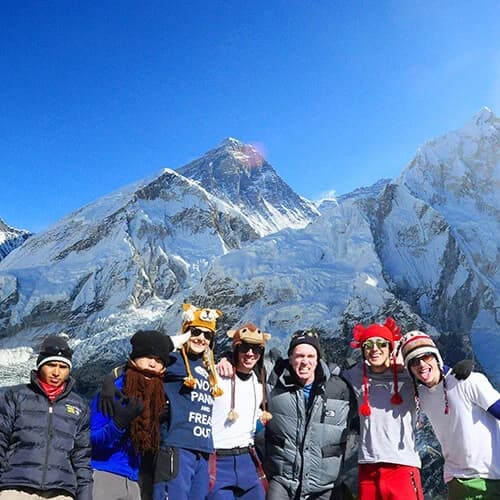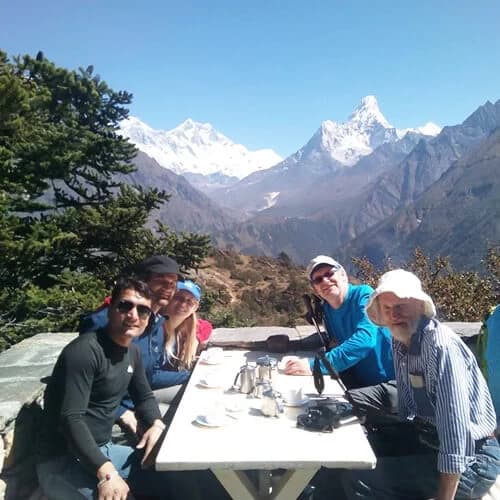With its magnificent landscapes and ancient cultural heritage, Nepal has become an extremely sought-after destination for professional and amateur drone users. However, due to safety, privacy, and national security issues, the Civil Aviation Authority of Nepal (CAAN) has made some regulations regarding the operation of drones in Nepal. These regulations are designed to ensure responsible and safe flight of drones and protect the public and sensitive regions. For photography, surveying, or hobby flying, operators of drones are required to obey strict regulations, including obtaining the necessary permits, staying clear of no-fly zones, and flying within permissible altitude limits.
Drone Rules and Regulations Nepal
What are the rules and restrictions I need to know?
Locals and foreigners are required to abide by the rules and regulations while operating drones in Nepal. Understanding and complying with drone laws is crucial to avoid legal consequences and ensure the safe operation of drones in Nepalese skies.
Registration and Unique Identification Number (UIN)
In Nepal, all drones must be registered with the Civil Aviation Authority of Nepal (CAAN) prior to operation. After successful registration, every drone is assigned a Unique Identification Number (UIN), which is to be prominently marked on the drone. This ensures that authorities can trace the ownership and use of drones, making them accountable and improving airspace safety.
To register a drone, users must provide information such as the drone's specifications, purpose of use, and owner identification. Both individuals and entities, including foreign operators, must undergo this registration. The UIN is similar to a drone license plate and is necessary regardless of the drone's size or use. Flying an unregistered or operating a drone without a UIN is punishable by fines or confiscation. Thus, registration is critical before legally flying drones in Nepal.
Weight-Based Operational Classifications
Nepal has kept some drone regulations to facilitate the safe and responsible flying of unmanned aerial vehicles (UAVs) across its diverse and often sensitive landscape. Under the control of the Civil Aviation Authority of Nepal (CAAN), the rules are meant to protect public safety, privacy, and national security. A key aspect of the policy is the division of drones based on weight, which determines the type of permission and operational limits required. These classes are essential for anyone looking to operate a drone legally in Nepal, whether for recreational, commercial, or research purposes. Weight-based drone classes are:
- Nano: Up to 250 grams with no prior approval to fly and is applied with general safety rules.
- Micro: From 251 grams to 2 kilograms requires CAAN permission.
- Mini: From 2 to 25 kilograms, detailed approval and operational planning are required.
- Large: The weight of more than 25 kilograms is regulated heavily, and detailed flight plans and CAAN clearance are required.
Altitude and Distance Limitations
Nepal has strict altitude and distance limitations on drones to maintain airspace safety and prevent interference with aircraft. The Civil Aviation Authority of Nepal (CAAN) established these rules, which vary based on the drone category and proposed use.
Operators must fly at specified height limits and remain out of reach of humans, objects, and closed areas such as airports, military zones, and government buildings. Violating these restrictions may lead to legal action, including fines or the confiscation of the drone. Observing altitude and distance limitations ensures safe and responsible use of the drone and protects air traffic and public safety.
- Maximum Altitude: 120 meters (400 feet) above ground level.
- Maximum Horizontal Distance: 500 meters from the operator (Visual Line of Sight – VLOS).
- No-fly Zones: Within 5 km of airports, military bases, and government buildings.
- Minimum Distance from People/Structures: 30 meters horizontally.
- Night Flying: Not allowed without special permission from CAAN.
No-Fly Zones and Restricted Areas
Nepal has announced several No-Fly Zones and Restricted Areas to safeguard sensitive regions, ensure public safety, and guarantee national security. Drone flights are prohibited in these regions unless specific permission is granted by the Civil Aviation Authority of Nepal (CAAN).
Flying a drone over these regions without permission is a serious crime and can lead to legal action, including confiscation of the drone or prosecution. It is essential for both recreational and commercial drone pilots to know about and honor such limitations. Following updated maps and obtaining required authorizations are needed to maintain safe and lawful drone operations within Nepal. No-fly zones and restricted areas are:
- Airports: Within 5 kilometers of any airport or airstrip.
- Military Areas: Bases, camps, and military training zones.
- Government Buildings: Including embassies and official residencies.
- Heritage Sites and National Parks: Special authorization from CAAN and other relevant authorities is required.
- Densely Populated Public Places, Such as stadiums, protest sites, and events.
- Border Crossings: Flight over or near borders is strictly prohibited without special clearance.
- Urban Hubs: Some city locations may be restricted based on risk assessment
Special Permissions for Foreign Operators
Foreign drone operators are required to follow additional procedures before flying drones in Nepal. The Civil Aviation Authority of Nepal (CAAN) requires all foreign tourism, research, or commercial users to seek special permissions before operation. The process helps ensure that foreign nationals' activities involving drones adhere to country security, privacy laws, and aviation safety regulations.
Foreigners operating drones illegally are penalized, equipment is confiscated, or they are prosecuted. To legally fly a drone, a foreign user must submit through the channels and provide a detailed description of their drone, flying purpose, and regions they plan to fly over. Special permissions for foreign operators are:
- Pre-approval Required: Submit to CAAN before visiting Nepal.
- Drone Registration: Register a drone and obtain a Unique Identification Number (UIN).
- Flight Purpose: State purpose (e.g., camera work, surveying, study).
- Submission of Flight Plan: This shall include each flight's pace, altitude, and duration.
- Security Clearance: This may be subject to clearance by the Ministry of Home Affairs and other government departments.
- Permission from Concerned Agencies: In the event of flying over national parks or heritage areas.
- Local cooperation: Generally required to collaborate with local authorities for operation.
Commercial Drone Operations
Commercial use of drones in Nepal is strictly regulated to ensure safety, privacy, and compliance with aviation rules. Anyone intending to use drones for commercial reasons such as aerial photography, survey, mapping, agriculture, or delivery must obtain advance approval from the Civil Aviation Authority of Nepal (CAAN). Operators need to register their drones, obtain a Unique Identification Number (UIN), and detail the nature and scope of their work in a written application.
A flight plan must be submitted for clearance, including suggested locations, altitude, and duration. Additional clearances from other government departments, like the Ministry of Home Affairs or the Department of National Parks, may be required depending on the operation. Commercial operators must also appropriately train pilots and acquaint themselves with the drone laws of Nepal. Flying drones over restricted or sensitive areas without permission is strictly prohibited. In addition, liability insurance and equipment insurance are also recommended. Overall, compliance with all the regulations is necessary to avoid legal issues and ensure safe operations.
Academic and Research Use
Drones have become increasingly popular for research and academic purposes in Nepal, including environmental study, archaeological surveying, agriculture, and disaster surveys. All these activities, however, must be carried out according to some guidelines set by the Civil Aviation Authority of Nepal (CAAN). A request with CAAN approval explaining the research purpose, drone specifications, and intended flight should be made in advance.
Additionally, clearance must be required from other agencies such as the Ministry of Education, Ministry of Home Affairs, or Department of National Parks and Wildlife Conservation. All drones used for research activities should be compliant with altitude, distance, and no-fly zone restrictions. You must also keep in mind that the data collected using drone flights should not violate privacy or national security laws. Ensuring proper permissions and enduring regulations allows them to contribute safely to Nepalese innovation and knowledge.
Obtaining Filming Permits for Drone Use
To obtain a permit for drone shooting in Nepal, operators must go through a formal process under the supervision of the Civil Aviation Authority of Nepal (CAAN). The process involves filing an application with CAAN and providing necessary documents such as drone registration, an aerial permit from CAAN, and a comprehensive flight plan. Shooting in specific areas may also require the approval of other government bodies, such as the Ministry of Information and Communication, the Ministry of Culture, Tourism, Civil Aviation, and the Ministry of Defence.
The application must contain specific information on the areas where the shooting will occur, dates, times, and security clearance if necessary. Operators must also provide an undertaking to comply with CAAN's flight regulations, such as altitudinal limits, no-fly zones, and flying hours. After approval, the permit will indicate the operating conditions and must be strictly followed. Film shooting in sensitive areas, including national parks or heritage sites, will require special permits. Operators must ensure that they have proper insurance coverage against possible risks.
Safety and Operational Guidelines
Drones provide exciting opportunities, but safe operation is always the top priority to prevent accidents and ensure compliance with the law. In Nepal, the Civil Aviation Authority of Nepal (CAAN) established clear safety and operation standards for protecting drone users and the general public. Following rules is essential for minimizing hazards, maintaining airspace security, and avoiding legal prosecution. Operators must adhere strictly to equipment standards, flight conditions, and overall behavior while flying.
- Fly in visual line of sight (VLOS).
- Maintain a maximum height of 120 meters (400 feet).
- Avoid flying near airports, military zones, or government buildings.
- Maintain the drone well and keep it in good condition regularly.
- Avoid flying during adverse weather (high winds, rain, fog).
- Be considerate of privacy; avoid taking pictures of individuals without consent.
- Avoid flying over masses of people or residential areas.
- Always carry valid permits for restricted or special zones.
Penalties for Non-Compliance
In Nepal, violating drone regulations has serious consequences. The Civil Aviation Authority of Nepal (CAAN) charges penalties to ensure safety and proper management of the airspace. Violation can lead to fines, confiscation of drones, or even legal action, depending on the nature of the breach. Drone operators must comply with all regulations to avoid legal action and proper operation of drones. Penalties for non-compliance are:
- NPR 2,000 to NPR 50,000 fine.
- Seizure of the drone.
- Imprisonment for serious offenses.
- Revocation of license.
- Legal action for damage to property or injury.
Some Most Popular Treks
- Everest Base Camp Trek - 14 Days
- 12 Days Everest Base Camp Trek
- Everest Base Camp Luxury - 14 Days
- Everest Cho La Pass - 17 Days
- Everest High Pass 16 - Days
- Annapurna Base Camp - 13 Days
- Ghorepani Poon Hill - 7 Days
- Annapurna Circuit - 17 Days
- 12 Days Annapurna Circuit Trek
- Manaslu Circuit - 14 Days
- Manaslu Trek 12 Days
- Everest Base Camp with Island Peak - 16 Days
- Everest Luxury Trek with Helicopter Return
- Langtang Valley - 10 Days




